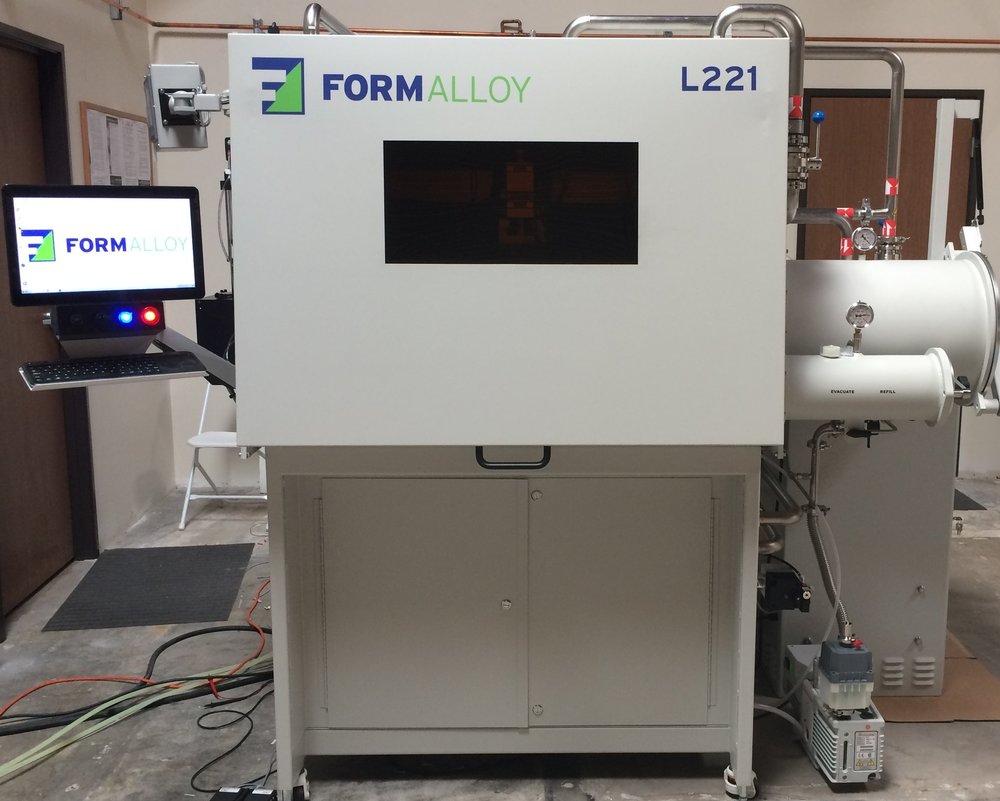California-based 3D metal printer manufacturer Formalloy will be demonstrating two key elements of its directed energy deposition (DED) systems and solutions at the RAPID + TCT show this week: robotic integration for metal additive manufacturing and a new powder feeder design called the Alloy Development Feeder (ADF).
Formalloy expects the new products will accelerate adoption of metal additive manufacturing from prototyping to production components by integrating the elements of its full metal AM systems into a robot, providing scalability in both size and throughput. Furthermore, the ADF was developed to help enable the production of new materials and alloys through the high throughput of bulk alloy synthesis provided by the powder feeder. Material development expert and University of California San Diego Professor Dr.Kenneth Vecchio comments:
“The ADF provides an unprecedented capability for material development and research.”

Accelerating research for new metal alloys
Formalloy’s newly developed ADF powder feeder is a response to the need for new alloys optimized for additive manufacturing from researchers, material companies and end users in the aerospace and automotive industries. With the capabilities of the ADF, Formalloy hopes to enable the rapid development of new alloys that can be leveraged for product improvement and enhanced material properties for products in these industries.
Alongside alloy development, the ADF also allows for the precise deposition of gradient materials through pre-alloyed layers. This guarantees composition accuracy and enhanced material properties for detailed gradient parts.
Equipping robots with additive manufacturing components
Formalloy’s metal additive manufacturing integrated robotic system will be equipped with its AX Metal Deposition Head, which is also featured on the company’s X and L-series laser metal deposition additive manufacturing systems. The technology is said to have a proven reliability for up to 8kW of laser power alongside built-in quick-release features, enabling rapid maintenance and component swaps reportedly in as little as 3 minutes.
Robots can 3D print, clad, and repair metal parts when fitted with the Formalloy AX deposition head, as well as either the new ADF or PF powder feeder, and a laser. Formalloy will be demonstrating robots integrated with its metal additive manufacturing technologies at Formalloy Booth 441 at RAPID + TCT.
Optimizing alloys for AM
The optimization of materials for additive manufacturing, like alloys, allows for the production of parts with superior properties when compared to 3D printing with materials developed for traditional manufacturing processes. With this in mind, several other organizations have been working towards developing metal alloys for additive manufacturing, like NASA, which created and 3D printed a new copper-based alloy for use in rocket propulsion components in March 2019.
Alongside NASA and Formalloy is HRL Laboratories, a research center owned jointly by General Motors and Boeing. It announced the registration of its high-strength 3D printable aluminum alloy in April 2019.
Furthermore, Intellegens, an AI company spinning-off from the University of Cambridge, used its machine learning algorithm to design a new nickel-based alloy for Direct Laser Deposition, eliminating long and expensive experiments.
You can now cast your vote for the third annual 3D Printing Industry Awards. Help decide this year’s winners now.
Expect a continuous stream of news from RAPID this week – you can keep track of it all by subscribing to the 3D Printing Industry newsletter, following us on Twitter and liking us on Facebook.
Looking for a career in additive manufacturing? Visit 3D Printing Jobs for a selection of roles in the industry.
Featured image via Formalloy.

